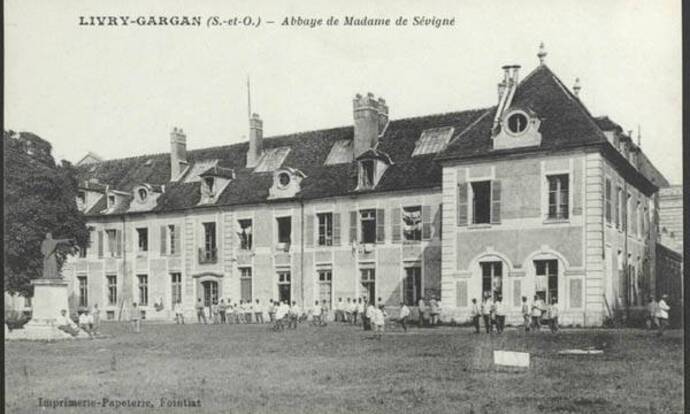The Abbey of Livry

From Notre-Dame de Livry, there is nothing left. The abbey, whose origins date back to the 12th century, had a leading monastic life until the Revolution. The famous Marquise de Sévigné greatly appreciated the place.
Built in 1197, the abbey was founded by King Philippe-Auguste to honour the memory of one of the members of the Garlande family, lords of Livry. It was consecrated by the bishop of Paris in 1197. The religious had the mission of guarding the tomb of the Garlandes and prayed to God for the rest of this lord’s soul. Monastic life was divided between study, psalmody, manual labor, obedience, and poverty. About forty abbots succeeded each other until the Revolution.
The most famous master of the place was the abbot of Coulanges, from 1664 to 1687. Famous thanks to the stories of his even more famous niece, Marie de Rabutin Chantal, or Marquise de Sévigné. She stayed at the abbey especially from the death of her husband in 1651.
On November 2, 1789, the constituent assembly voted to make the clergy’s property available to the nation. At the end of 1790, the abbey was sold. Among the new owners was Robert-Guillaume Dillon, who was mayor of Livry from 1805 to 1815. In 1797, he demolished the chapel and transformed the buildings of the abbot and monks into a country house.
In March 1814, the abbey was devastated by foreign armies. In 1842, the property was bought by Admiral Jacob, former minister of Louis-Philippe’s navy.
A Spa project
When he died in 1854, the abbey passed into the hands of its universal legatee Robert de Vey, mayor of Livry from 1859 to 1871. In 1865, concerned about the development of the commune, he sold a large part of the land to the Société de Sévigné-les-Eaux. He hopes that the exploitation of four
Sulphurous springs will make Livry a spa.
The war of 1870 caused great damage. In 1880, Father Vincent de Paul Bailly began reconstruction work. A new chapel is built, the cloister is rebuilt. The abbey is surrounded by a vast park dotted with ponds.
It was bought by Dr Paumgartner in 1910. As the spa project is still in operation, it demolishes part of the old buildings and transforms the facades and the chapel into a casino style. But the project was buried in 1912. During the war, the abbey served as a barracks for the French troops. After the soldiers, it is the vagrants who settle.
The buildings are in ruins, the park abandoned. The property was sold to the company Bernheim et fils in 1923 and the subdivision of the complex began.
In 1924, a masonry contractor bought a 17-hectare lot. The manufacturer of pens and pencils Sermajor buys a lot consisting of buildings. These are transformed into factories. The last remains of these buildings were demolished in the 1960s to give way to a real estate complex. Today, Lake Sevigné is the only vestige of the Abbey of Notre-Dame de Livry.


 Mes démarches
Mes démarches